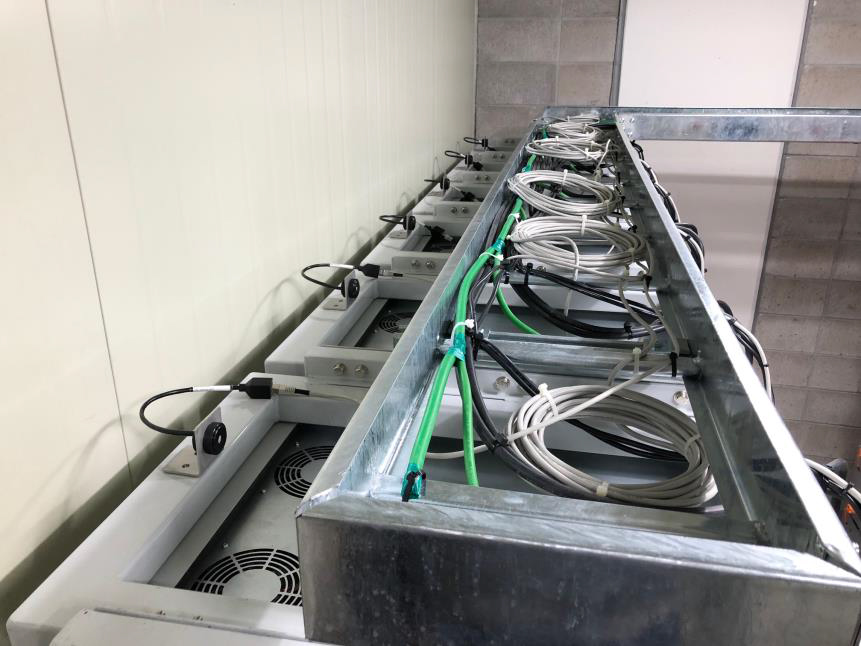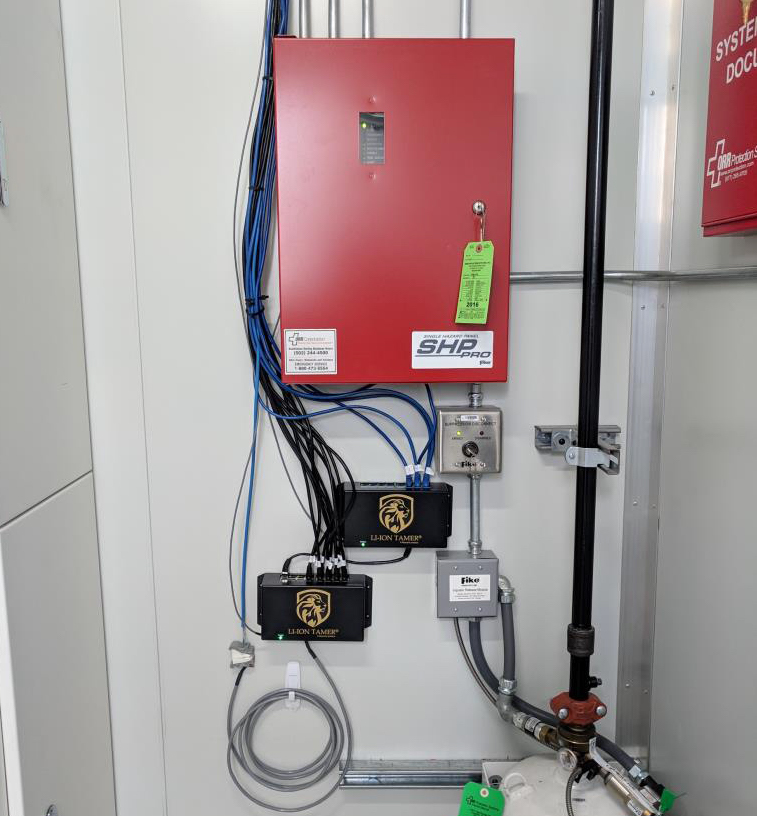
Crucial to clean power generation, battery energy storage systems need advanced fire protection. Steve Kenny, general manager for Advanced Fire Detection at Honeywell Building Technologies talks about why the detection of off-gases is an important line of defence.
This is an extract of an article which appeared in Vol.29 of PV Tech Power, Solar Media’s quarterly technical journal for the downstream solar industry. Every edition includes ‘Storage & Smart Power,’ a dedicated section contributed by the team at Energy-Storage.news.
Enjoy 12 months of exclusive analysis
- Regular insight and analysis of the industry’s biggest developments
- In-depth interviews with the industry’s leading figures
- Annual digital subscription to the PV Tech Power journal
- Discounts on Solar Media’s portfolio of events, in-person and virtual
Wind and solar farms, microgrids, data centres and telecom facilities have at least one thing in common: they rely on battery energy storage systems (BESSs) made of thousands of lithium-ion (Li-ion) cells. BESSs not only play a critical role in the transition to renewable energy and smarter power grids but also have become a key component of data centres and telecom hubs – both drivers of economic vitality worldwide.
The global market for utility-scale BESSs, valued at US$2.9 billion in 2020, is expected to grow at a CAGR of 32.8% from 2020 to 2025, reaching US$12.1 billion by 2025. If you factor in uninterruptible power supplies (UPS) for data and telecom centres, vehicle charging stations and all other energy storage applications, that number more than doubles. The total global energy storage market is projected to grow from US$7.8 billion in 2020 to US$26.8 billion in 2028.
Why have Li-ion cells become the enabling technology? They’re affordable; they offer high energy density for their size and weight; they hold their charge longer; they’re less prone to self-discharge than other battery types; and they require little maintenance and no periodic discharge.
Yet for all their advantages, Li-ion cells have vulnerabilities.
For one, they require complex battery management systems (BMSs) to keep them operating within safe parameters of voltage, temperature and charge. If managed improperly or subjected to abuse, batteries can fail, resulting in off-gassing, excessive heat generation and if the electrolyte in the cells ignites, it can quickly escalate into a catastrophic, often explosive fire, that is extremely hard to extinguish (thermal runaway) that can spread to surrounding cells in an accelerating domino effect.
Three stages of battery failure
• Abuse factor: Electrical, thermal or mechanical abuse can potentially lead to thermal runaway. Electrical abuse occurs when the battery voltage limits are exceeded during charge or discharge. Because numerous cells charge or discharge simultaneously in a BESS, risk of individual cells sustaining electrical abuse increases. When operational temperature exceeds the batteries’ heat specifications, it results in thermal abuse. Mechanical abuse refers to physical damage such as a crush, indentation or puncture.
• Initial cell venting (Off-gas): If the abuse factor continues, the battery liquid electrolyte will convert to gas, which will cause internal pressure build up inside the battery, exerting enough force to open a pressure relief vent or rupture the battery seals. This released gas is distinctly different than the release of gases at thermal runaway and often occurs several minutes prior to thermal runaway.
• Thermal runaway: With increasing internal battery temperature, the separator will melt down and rupture releasing smoke and igniting the electrolyte solvent. Gases emitted at this stage often include CO, CO2 and combustible gases. The resulting fire can produce temperatures exceeding 1,000°C (1,832°F) and spread to surrounding cells causing them to go into thermal runaway leading to a total system failure.
BESS hazards challenge conventional technologies
A large-scale energy storage facility requires a battery management system (BMS) to monitor voltage, current and temperature and prevent abuse of the batteries, but relying on a BMS as the only layer of defence against thermal runaway is risky. For one, a BMS can’t resolve single cell temperatures or voltages. Even with a temperature sensor on every cell, there can be hot spots that go undetected.
Conventional technologies such as smoke and fire detection, CO, CO2, lower explosive limit (LEL) monitoring often make up part of a comprehensive BESS safety solution. Smoke and fire don’t typically develop until thermal runaway has already initiated, so these systems would not engage until it was too late to halt the chain reaction. CO, CO2, LEL often don’t occur in detectable concentrations until thermal runway.
In short, these technologies are reactive to thermal runaway rather than proactive in forestalling. Even if a single cell has reached the point of emitting smoke or fire, it may well be too late to stop the reaction from spreading to surrounding cells.
Initial venting (off-gas) detection gets out in front of thermal runaway
Detecting the early signs of failing Li-ion batteries is critical to enable operators and shutdown measures to respond proactively in time to prevent thermal runaway and catastrophic, often explosive fires.
A study from DNV tested three technologies to assess their response times in detecting early signs of potential thermal runaway: off-gas sensors, cell voltage sensors and lower explosive limit sensors, which detect dangerous levels of combustible gas or solvent vapour.
Of the three types, off-gas detectors displayed the highest sensitivity and accuracy.
They averaged less than 10 seconds’ response time after off-gassing started and 6 minutes 11 seconds before thermal runaway commenced. Neither the LEL nor voltage sensors activated until after thermal runaway had initiated.
The results also showed that shutdown measures combined with off-gas detection effectively prevented thermal runaway. Once off-gassing was detected, the battery system was electrically isolated, which prevented the cell temperature from increasing and thus stopped the propagation to adjacent cells.

This is an extract of an article from Volume 29 of PV Tech Power, our quarterly journal. You can buy individual issues digitally or in print, as well as subscribe to get every volume as soon as it comes out. PV Tech Power subscriptions are also included in some packages for our new PV Tech Premium service.
About the Author
Steve Kenny is general manager of Advanced Fire Detection solutions for Honeywell. He has 27 years’ experience in the thermal process and IoT industries. Steve is based in Rolle, Switzerland.

